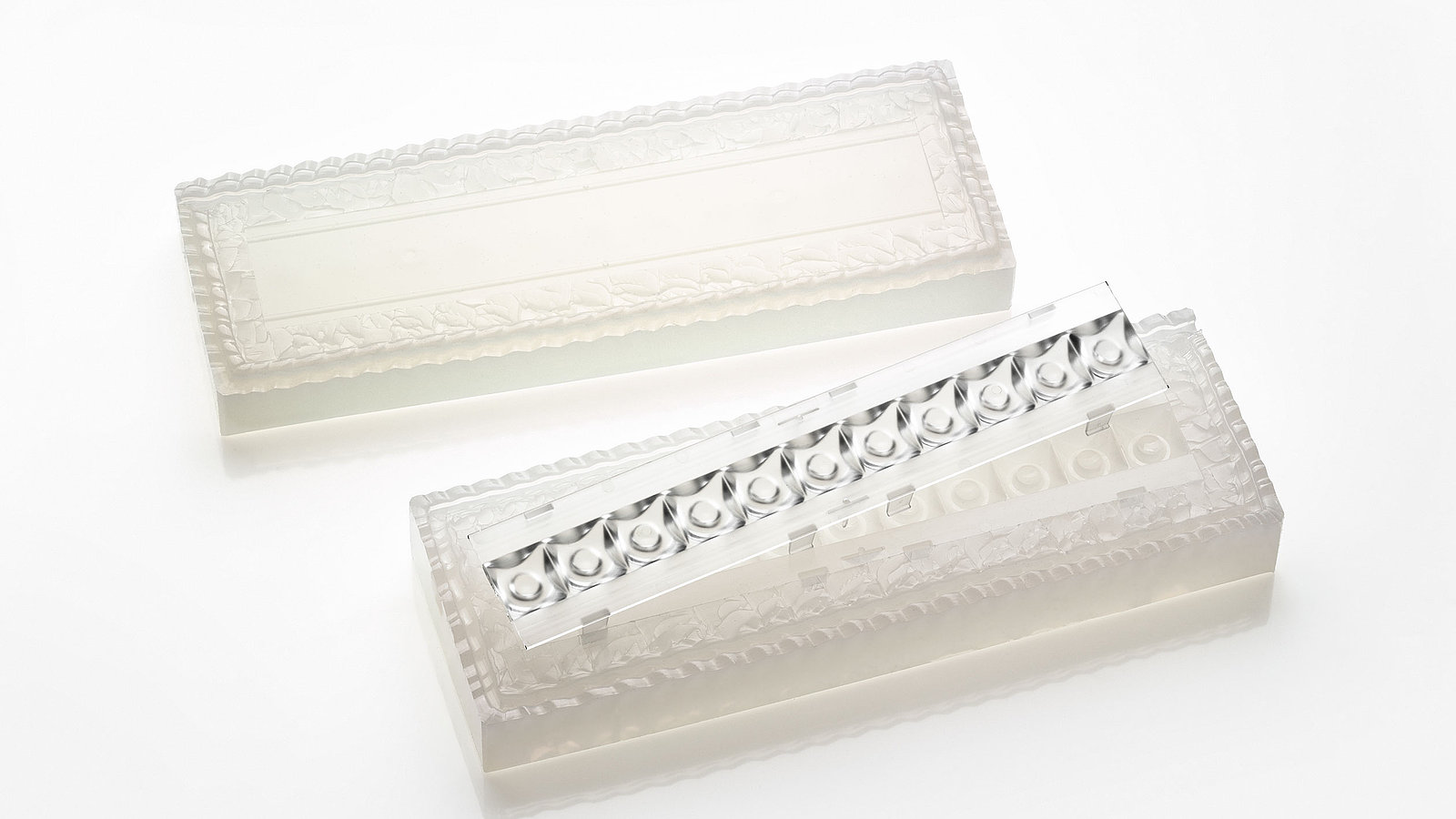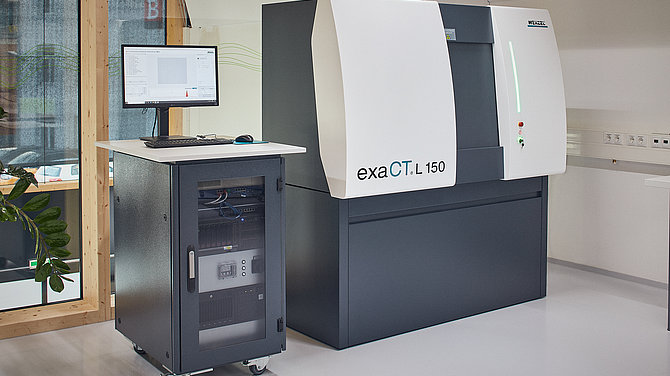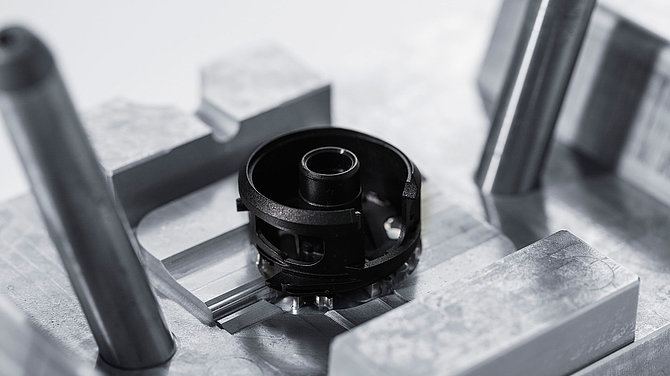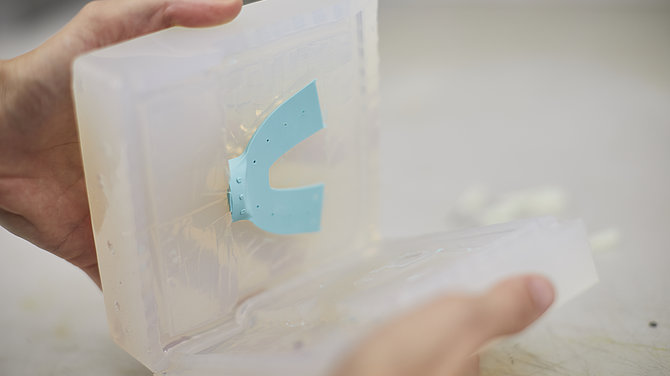1zu1 Prototypes offered to help troubleshoot the cause. The company has recently developed a piece of cutting-edge proprietary measuring technology. The device in question is based on state-of-the-art camera sensors and allows 3D measurements to be made from the object's surface down to the deepest recesses. 1zu1 uses it for quality assurance during product development, parts manufacture and for reverse engineering (redesign). In Zumtobel's case, the cause of the problem was quickly identified.
Thomas Kohler, you are the sales manager at 1zu1 Prototypes. Why do you offer optical metrology? How does this benefit your customers?
Fundamentally, we support our customers with their product development, while on the other hand we also manufacture parts in-house. In addition, there are extremely diverse requirements from the market when it comes to quality assurance and measurement protocols. With optical measurement, we also want to offer a new segment. This enables us to cover everything from basic prototype technology to complex measurement protocols. We also use 1zu1 metrology devices for reverse engineering. We offer rapid prototyping, with the emphasis on “rapid”. In the case of Zumtobel, we had the results on our desk within three days of receiving their inquiry. That's really fast.
Marco Hermann, you are the metrology specialist at 1zu1. Can you explain this process in more detail?
First, the objects are pre-treated, then reference points are glued on, then the points and a cloud are created. From this, a data set is generated, which can be compared with the original data set, allowing conclusions to be drawn, color comparisons to be made, dimensions to be determined. The error can then be located. This is the analysis phase. It's an optimal technology for locating defects, because you can see everything, from the surface to deep inside the object. The advantages here are obvious: fast color-deviation images, professional evaluation options, further analyses directly on the customer's premises.
Gerhard Galler, can you describe the troubleshooting process for the TECTON LED continuous-row luminaire? As project manager, I'm guessing you had your heart in your mouth?
It is certainly never pleasant when an error occurs in a newly developed product. We determined that the lenses had a small deviation from the planned light distribution curve. However, when we compared the simulation to the injection-molding tool, we couldn't find any errors. We therefore decided to have the molded part measured at 1zu1. Three days later, the results were in – fine sink marks, which can occur during plastic injection molding. We had already detected slight irregularities in the lens during our in-house investigations; however we were only able to determine the exact position and size of the areas that were causing the deviations from the planned light distribution curve on the basis of the measurement. The color comparison was especially helpful here. We measured the effect ourselves in the light lab. The light distribution curve did not match the simulation, it was too sharp and not as planned.
Thomas Kohler, are you ushering in a new era of quality assurance via 1zu1's metrology department?
In large companies, the requirements for quality assurance are constantly increasing. I think we're on the right track, we can offer this service within the framework of rapid prototyping, now also for metal and injection-molded parts. We also use the 1zu1 metrology equipment for internal purposes – it enables us to measure accurately at low cost. The topic of quality assurance is also very important within our company. When we're vacuum casting 100 parts, for example, it makes perfect sense to “GOM-ify” the original model. Quality assurance therefore goes in both directions, for us internally and externally as a service for our customers. Speed is a major factor here. This is our priority. We saw this again with the Zumtobel project. The Zumtobel team came to us and helped decide on the machine itself, which images were relevant, what should be looked at additionally, and in three hours we were ready. That's what you call top speed. And it's a real advantage.
Gerhard Galler, you won the Red Dot Award 2012 for the TECTON. A great success!
Of course, we're particularly pleased about this. The jury is international and the Red Dot stands for quality in terms of design and function. The TECTON has been specially developed for use in retail and storage systems and benefits from directional light and high energy efficiency. One thing is clear: In future, we will have our measurements verified for tricky products, so that we can identify any deviations faster and react accordingly at an early stage.
Thomas Kohler, you've been working with Zumtobel for some time now. What's special about this collaboration?
It's the innovation, proximity and continuity. We already produced the first prototype parts for this project in vacuum casting in 2009, and then the second part in 2010. In the process, we've been able to acquire a great deal of expertise. We milled the master models – that wasn't standard practice, but rather something new. The first samples worked out very well. It's therefore very interesting when we get this product back three years later and can continue to support it in a different context. It was a high-end product. We're talking about highly transparent, perfectly polished parts. Zumtobel's requirements were simply very high; we decided on the technology through mutual discussions. We also provide exclusive advice on materials for our customers. This mean they receive the best possible advice and support.
Marco Hermann, the measurements are one thing, but aren't there also additional benefits for the customer?
Correct. After the measurement, the customer receives a data set for the scanned part, which they can further process using the free GOM software, enabling them to display even more results. For example, they can add additional cuts and measurements in-house, etc. So there are really many additional possibilities for the customer. Also, this is in no way distance-dependent. They can simply continue working with the data set.
The questions were put to Gerhard Galler, Marco Hermann and Thomas Kohler by Hermann Braendle.




![[Translate to English:] Mechanical manufacturing (CNC)](/fileadmin/_processed_/3/c/csm_1zu1-MechanischeFertigung-Bauteile1_1b16c9709a.jpg)